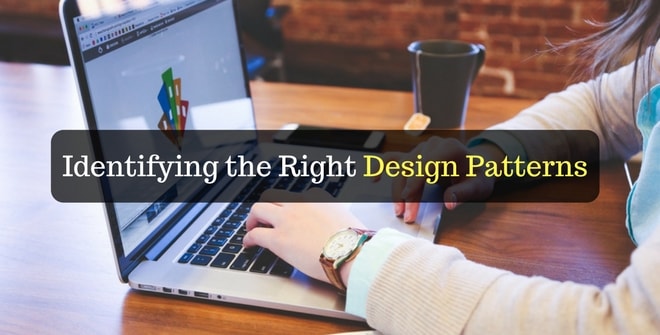Identifying the Right Design Pattern

Author : TechAffinity 28th Feb 2017

When it comes to designing the UI for the application, one can either follow any one of the already available design patterns or create something on their own. A design pattern is a probable solution for some of the common UI design problems. They are not a template or feature that you can just add to the app instead, they are just a set of guidelines that defines how to solve the problem.
Designers face some recurring problems while designing an app or a website like navigational structure, color schemes, typography, etc. Let’s assume that you are given the responsibility to develop a mobile-friendly website’s navigation menu. There are various ways a menu can be represented in a mobile, but the most common solution is to use a toggle. This is an example of a design pattern. Now let’s look into some of the effective UI design patterns.
Lazy Sign-up Design Pattern
Most of the applications today require user management. Converting the visitors into registered users is a top priority for all the websites and app. It is not easy to make the user provide their contact information right away unless you are a reputed and trusted brand. If you’re going to ask the user to register/login to view the website or access the app, then it is highly likely that they might not do so. Users prefer to spend time experiencing the interface before deciding whether to register or not. So it’s a good design pattern to provide the option to the user to allow the interface for a specific amount of time or events before asking them to signup. This is called as a Lazy Sign-up design pattern. Once the user gets the feel of the website/app, he will feel much more comfortable to register and take the next course of action.
Social Accounts Login
Despite providing lazy registration, some users might be scared of looking at a longer registration form. Users prefer to do things which are simple and less time-consuming. The traditional approach is to ask them to fill a form and then send a confirmation email. This approach requires a lot of actions to be done by the user. This can be simplified if we provide them with the option to login using their social media accounts. The register screen will display possible social media icons like
- Connect using Facebook
- Login using Twitter
- Log in using Google+
The users can just click the account of their preference and they will be automatically registered. There is no need to fill a form or take any other action. This design pattern also removes the need to remember multiple passwords. All social media sites provide their free APIs for integration.
Navigate Website Sections
Single page websites have gained popularity in recent years. Though they are extremely fast there is one drawback in it. The single page website might contain a lot of sections on the same page. It becomes difficult to access the particular section of user’s choice. The concept of infinite scroll UI is easy on eyes but might be a burden to the user. If the user has scrolled down to section 12 and if he wants to scroll back to section 2, he has to manually scroll all the way up. This is not a good UX design pattern.
This can be handled in two ways
Fixed Navigation Menu: The menu will stay on the top forever, it will be always visible even when you keep scrolling. This will make sure, the user can access the menu to reach other sections easily at any given moment.
Jump-to-top Button: This is a small button that is mostly displayed at the right bottom corner of the screen always. When clicked user will be taken back to the top of the site always. This is really useful for e-commerce products page and long blogging articles.
Long story short, there is no pre-defined rule to select the correct design pattern. You need to understand the problem in hand and analyze how to choose and deliver the best ux design pattern accordingly.